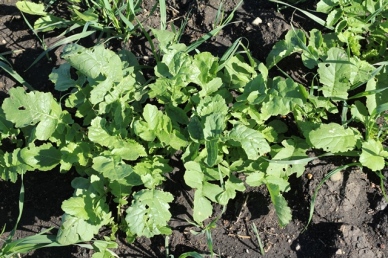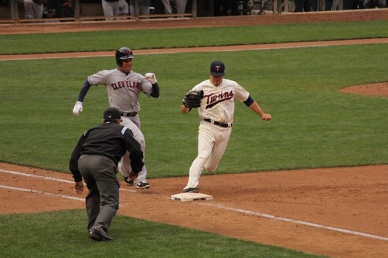The neighbors have been asking, so here is an update on our Tillage Radish and Oat cover crop.
We have received more rain this fall than we have during the same time period the last two years, so our cover crops have gotten off to a great start. We planted this field on August 31st. You can read about the process here.
Neighbors are starting to ask what we have growing in our field. They know one of the plants is a small grain (wheat, oats, barley, and rye are considered small grains), but they are not sure what the other crop is that was planted in rows. This made me think that maybe the rest of you would like to see what our neighbors are seeing.
This first photo shows the tillage radish planted in rows with oats in between the rows.

This is the overview of the field. You can see how the Tillage Radish is more noticeable in the oats.

The radish leaves are broad, and very different from other crops grown in our area. The leaves and the root will almost disappear completely over the winter, leaving the nutrients behind in the soil.

I wanted to see how big the radish taproot was 38 days after planting. To make sure I was getting a random radish, I walked out into the field, and plopped my shovel near a row. That was the one I would dig up.

The soil is still pretty moist after our weekend rains, so digging was easy. I wanted to get as much of the taproot as I could, so I teased it out of the loosened dirt.We are in a wind advisory, so holding the radish still enough for a photo outside was a bit of a challenge.

I walked back into the house to measure the length of the taproot. The diameter is just shy of 1/2 inch at its widest. I was impressed that the roots measured at 8 1/2 inches already!

I believe I was able to tease out the entire taproot, and didn’t break off the end, but it was difficult to tell without a magnifying glass. Here is another view of the root length.

As long as we don’t have a hard freeze (around 20 deg F), the radish will continue to grow both in diameter and length. I’ll take a few more photos in a couple of weeks, and give you another update. In the meantime, we are getting ready to finish harvesting our last field of soybeans.




